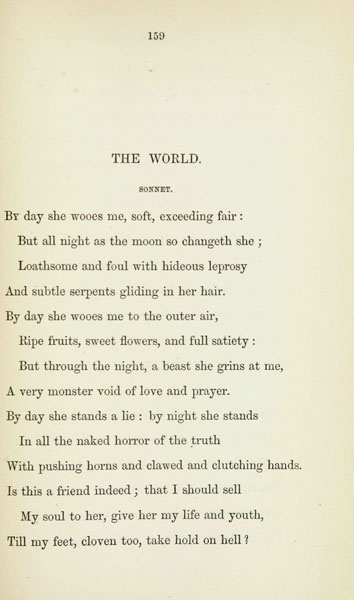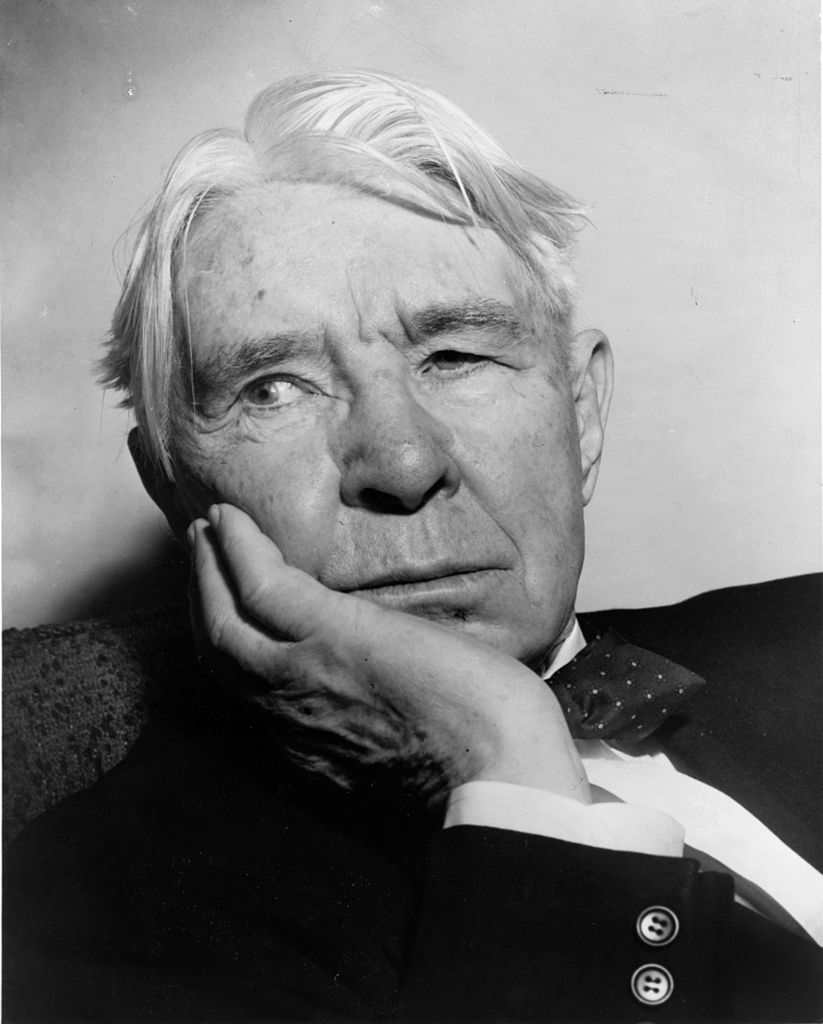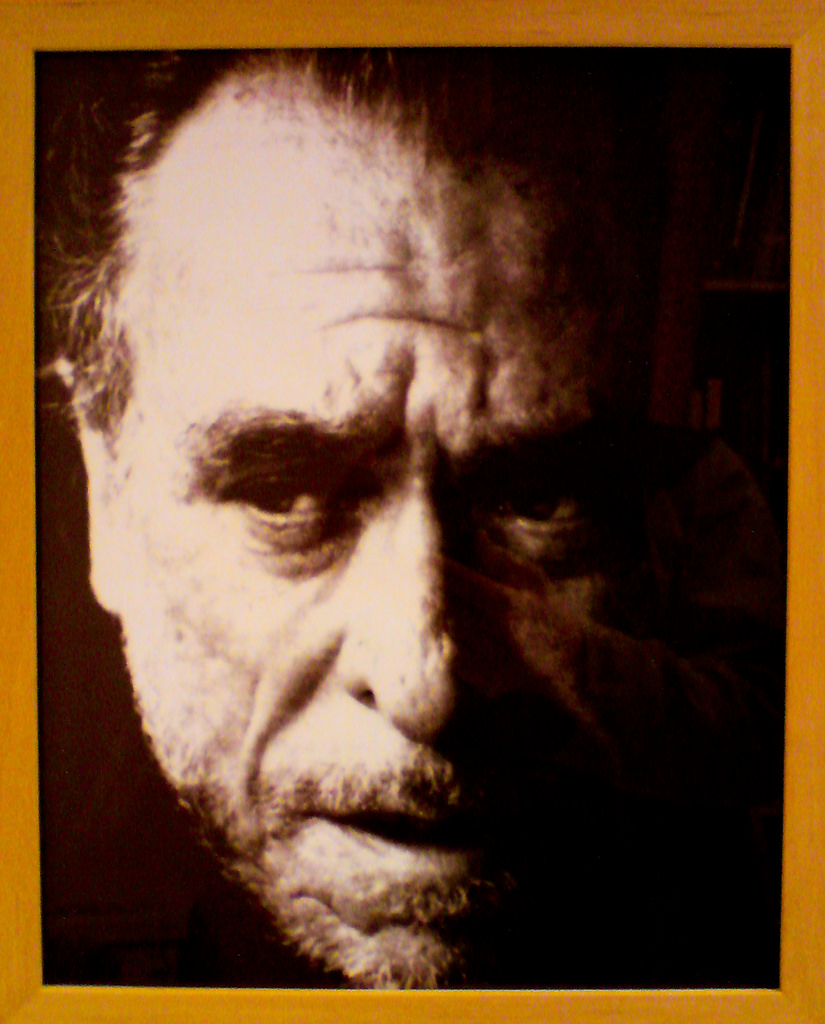Critical Analysis of I am the People, the Mob:
“I am the People, the Mob” is more a vision of the future than a description of the present. The poet outlines a dream of self-governance. He describes the hardships that the masses have had to bear at the hands of a powerful and corrupt few, and says that one day the common people will rise up and change the situation. It is thought that common people are just that – common or ordinary. But this is not true. Extraordinary persons have also come from within them. And other such extraordinary men will come again. Hence, the power of the masses should not be underestimated. This was a great message for readers at the beginning of the 20th century when nations were starting to form, borders to be drawn, and new and more innovative systems of governance coming into being. It could also have served as inspiration for many of the colonial nations that were to gain their independence in the 20th century. That their colonial leaders need to not govern them, and that they could be led to freedom by one amongst themselves, was a radical notion at the time. Yet this was exactly what happened in the postcolonial era. The colonial rulers have been driven away, and these nations chose to be self-governed instead. Sandburg’s later sympathies for the Civil Rights Movement can also be traced back to this poem, because of the message it gives regarding equality between the leaders and the common man. For Sandburg, the African-Americans were common men, and the white-majority government was their oppressors. He believed that the African-American community should not live like second-class citizens, but rather they should have all the same rights as their white counterparts. Only then could his beloved country be called a true democracy. This was Sandburg’s ultimate aim – to turn America into a site of social equality.
Annotation of I am the People, the Mob:
Please note: N= noun, V=verb, Adj=Adjective, Adv=Adverb, P=Preposition
Mob (N): A large crowd of people, especially one that is disorderly and intent on causing trouble or violence
Mass (N): A large number of people or objects crowded together
Inventor (N): Someone who creates or designs something that has not existed before
Audience (N): The assembled spectators or listeners at a public event such as a play, film, concert, or meeting
Witnesses (V): Third person present tense of the word “witness”, that is, to see (an event, typically a crime or accident) happen
History (N): The past considered as a whole
Napoleon (N): Napoleon Bonaparte was a French military and political leader. He rose to prominence during the French Revolution and its associated wars. As Napoleon I, he was the Emperor of France from 1804 to 1814, and once again in 1815. Napoleon dominated European affairs for nearly 20 years while leading France against a series of coalitions in the Revolutionary Wars and the Napoleonic Wars. He won most of his 60 major battles and seized control of most of continental Europe before his ultimate defeat in the Battle of Waterloo in 1815. One of the greatest commanders in history, his campaigns are studied at military schools all over the world.
Lincoln (N): Abraham Lincoln was the 16th President of the United States. He served from March 1861 until his assassination in April 1865. Lincoln led the United States through its Civil War, which was not only its bloodiest war but also its greatest moral, constitutional and political crisis. In the process of this, he preserved the Union, abolished slavery, strengthened the federal government, and modernized the economy of the United States.
Forth (Adv): So as to be known or revealed; out
Prairie (N): A large open area of grassland, especially in North America
Plowing (V): Present participle form of the word “plough”, that is, to turn up the earth of (an area of land) with a large farming implement with one or more blades fixed in a frame to be drawn over soil, especially before the planting of seeds
Growl (V): Make a low guttural sound of hostility in the throat
Spatter (V): Cover with drops or spots of something
Fleck (N): A very small patch of colour or light
Sneer (N): A contemptuous or mocking smile, remark, or tone
Derision (N): Contemptuous ridicule or mockery
Poetic Devices in I am the People, the Mob:
Rhyme scheme:
The poet does not follow any identifiable rhyme scheme at any point in “I am the People, the Mob”. Its form is thus similar to the experimental poetic styles that were popular in the Modernist period spanning the first half of the 20th century. However, its subject matter is not similar to the mythical and psychological themes of other Modernist poetry.
Rhetorical devices:
Hendiadys:
This is a rhetorical device in which two words connected by a conjunction are used to express a single notion that would normally be expressed by an adjective and a substantive. In this poem, the poet uses the device of hendiadys when he uses words like “people”, “mob”, “crowd” and “mass” altogether, only separated by the conjunction “and”, in lines 1 and 15.
Apostrophe:
This rhetorical device is used when a poet addresses his or her poem to an absent audience. In this poem, the poet uses the device of an apostrophe in line 2 when he addresses the common people as “you” in line 2 and goes on to give them an inspirational speech on why they should not underestimate the power of their unity.
Metaphor:
This rhetorical device is used when a covert comparison is made between two different things or ideas. In this poem, the poet uses the device of metaphor in lines 4 and 5 when he compares the leaders of the common people with two great historical figures, Napoleon and Lincoln. He again uses it in line 6 when he compares the masses to a prairie that can bear all the hardships of being plowed.
Personification:
This rhetorical device is used to bestow human qualities on something that is not human. In this poem, the poet uses the device of personification with respect to the figure of Death, often represented in images as a skeleton in a dark cape and holding a scythe in his hand. Though the poet does not describe this exact figure per se, it is for sure that he certainly means to personify Death since he has capitalized the “d” in “Death”.
Central Idea of I am the People, the Mob:
It is the common people, and not their governors, who provide clothes and food for mankind. Yet it is also the common people who are suppressed and exploited. However, this situation will soon change. The common people may forget the sufferings of the past, but they will not forget the lessons they have learned. All those who have taken advantage of them will be pushed off their thrones and their high horses, and the masses will assume control instead. When that happens, everyone will be treated equally, no one will be exploited, and man will live in peace and harmony. However, the power of the masses will not be challenged by any powerful governors then. No one will look down on the common man any longer.
Themes of I am the People, the Mob:
Positive resignification of the mob:
The word “mob” is generally thought to have a negative connotation. We use the word in the context of unruly people, who are looking to make a disturbance of some sort. However, Sandburg gives the word a more positive meaning in this poem. Yes, it is true that the mob, composed of all common people, will cause a disruption in the usual course of things, one cannot frown upon them for their means because their ends are noble. They aim to take power into their own hands so that there are no more power-hungry men around to exploit anybody.
Democracy:
Democracy is generally associated with the phrase “of the people, for the people, by the people”. That is why Sandburg advocates democracy in this poem. He takes the side of the masses, and speaks as their representative, on the need for a system of governance that is fair to every person in society and does not cheat anyone either.
The tone of I am the People, the Mob:
The tone of this poem is one of defiance. Though it is believed that the masses can easily be suppressed, the poet does not agree with this. He feels that the common people can start a revolution to govern themselves. His tone reflects this belief very strongly.
Conclusion:
After reading “I am the People, the Mob”, there can be no doubt as to Carl Sandburg’s loyalty. He is all liberty, equality, fraternity. This poem is his way of instilling these same ideas into the minds of his readers.
Some online learning platforms provide certifications, while others are designed to simply grow your skills in your personal and professional life. Including Masterclass and Coursera, here are our recommendations for the best online learning platforms you can sign up for today.
The 7 Best Online Learning Platforms of 2022
- Best Overall: Coursera
- Best for Niche Topics: Udemy
- Best for Creative Fields: Skillshare
- Best for Celebrity Lessons: MasterClass
- Best for STEM: EdX
- Best for Career Building: Udacity
- Best for Data Learning: Pluralsight
















